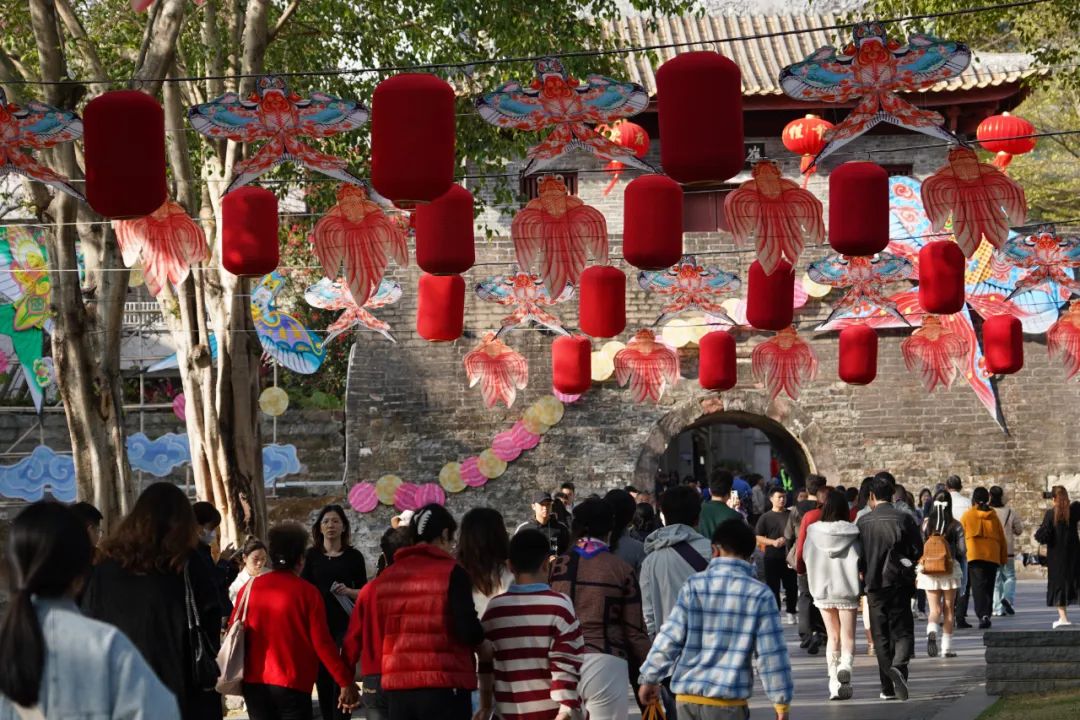
Red lanterns bring a festive mood to Nantou City.
Against the backdrop of the azure sky, a form of Chinese folk art has glided through history.
Originating in China around 3,000 years ago, the earliest kites were crafted from silk and bamboo.
Over time, the practice of kite flying spread throughout the world and became a popular pastime in many countries. Today, kites take various shapes and materials, used both in sports and for fun.

Kites are deconstructed and reinvented as modern installments that decorate Nantou City.

A huge kite is seen on the wall of Nantou City.
Running until Feb. 12, Shenzhen's Nantou Ancient Town, rebranded as Nantou City, invites visitors to a public art showcase celebrating kites, a Chinese cultural heritage with regional variations across the country.
Adorning the south and east walls of Nantou City are huge kites amidst smaller counterparts and lanterns, in both traditional and contemporary 3D designs. Within the Baode Plaza and Shuyuan Plaza, avant-garde kites provide a glimpse into the modern evolution of this ancient art form.
Located in a historical hall at the heart of Nantou City, an exhibition elucidates the origins, craftsmanship, and contemporary adaptations of kites.
One segment highlights Beijing's iconic kites, offering insight into the art of kite-making in a book compiled by Cao Xueqin, the renowned author of "Dream of the Red Chamber."
Other sections educate visitors on the rudiments of creating and flying kites, and feature a diverse array of both traditional and innovative designs from around the globe. Guests can also delve into the rich tapestry of kite culture in China, tracing its evolution over a remarkable 3,000-year history.
Time: Until Feb. 12
Venue: Nantou City, Nanshan District
Metro: Line 12 to Zhongshan Park Station, Exit D; Line 12 to Nantou Ancient City Station, Exit C



